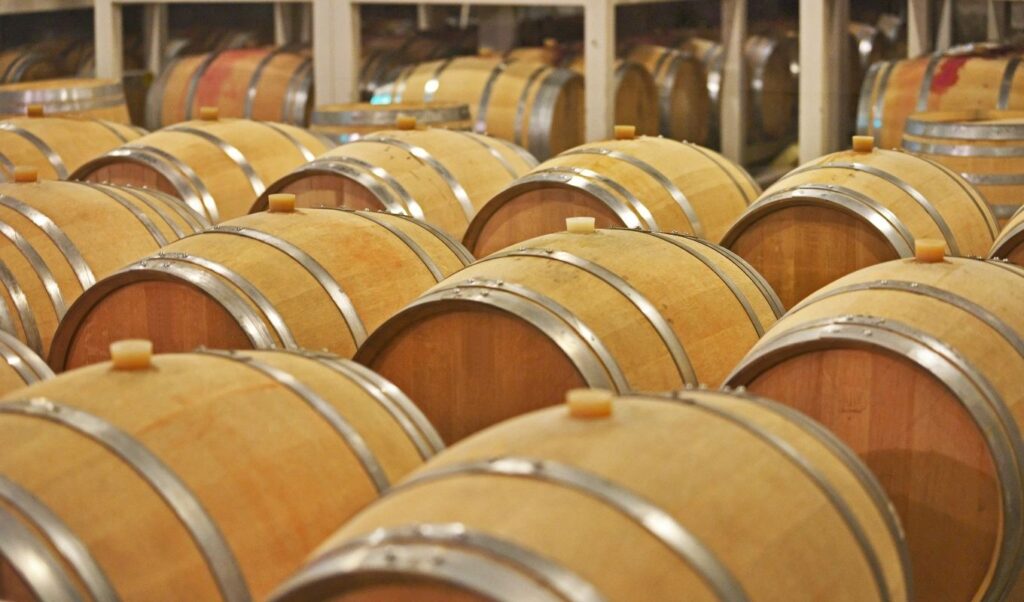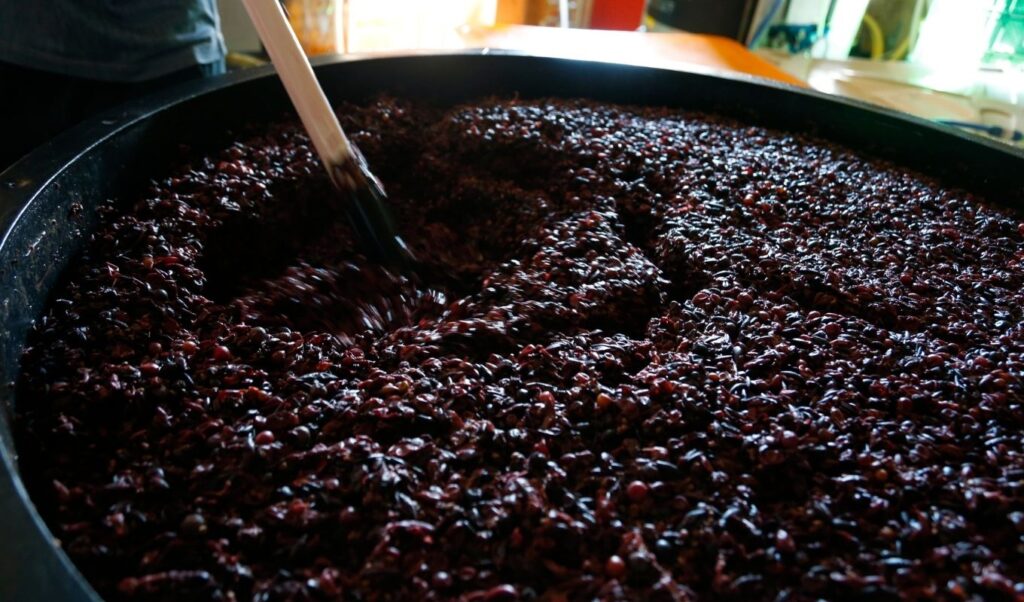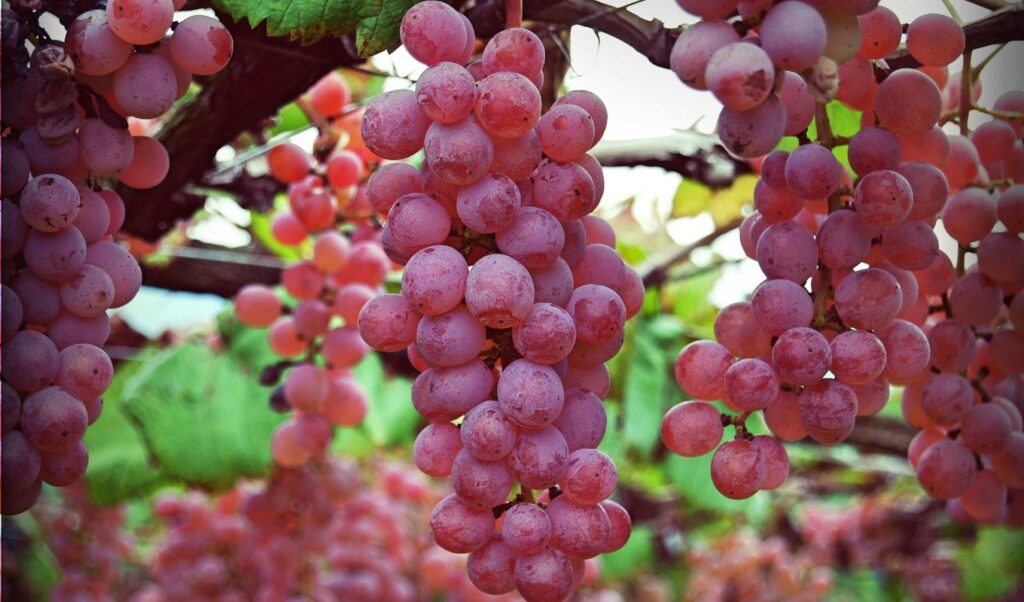When people think of Japanese beverages, their minds often jump to the archipelago’s legendary sake, its refreshing beer, or its wildly popular whisky. However, wine has been produced in Japan for over a century and is slowly gaining recognition in the global wine industry.
In this guide, we’ll take a deep dive into the world of Japanese wine, exploring its history, the top wine regions in the country, and the different grape varieties used to create this unique beverage.
History of Japanese Wine

The origins of Japanese wine date back to the late 19th century, when a Frenchman named Paul Masson introduced the grape-growing and winemaking techniques he had learned in his homeland to the Yamanashi Prefecture in Japan.
This region, located in the central part of Honshu Island, soon became the center of the Japanese wine industry and remains a leading producer of wine in the country to this day. However, Japanese wine production was largely limited to the domestic market until the 1990s, when several wineries began to export their products overseas and gain international recognition.
The Best Wine Regions in Japan
Japan has a thriving wine industry that produces high-quality wines that have garnered international acclaim. While the industry is relatively young, with the first vineyards only being planted in the late 1800s, Japan’s wine industry has come a long way in a short amount of time. Here are some of the best wine regions in Japan:
Yamanashi Prefecture

Located in central Japan, Yamanashi Prefecture is Japan’s largest wine-producing region. The area is known for its cool climate, which is ideal for growing grapes for sparkling wines and light-bodied red and white wines. The region’s most famous wineries include Château Mercian and Lumiere Winery.
Nagano Prefecture

Nagano Prefecture is located in central Japan and is known for its mountainous terrain and cool climate. The region’s wineries are known for producing high-quality red and white wines that are often compared to those of Burgundy, France. Some of the top wineries in Nagano Prefecture include Domaine Hase, Takano Winery, and Azumino Winery.
Hokkaido

The island of Hokkaido is Japan’s northernmost prefecture and is known for its cold climate. Despite this, the region’s vineyards produce some of the best wines in the country, including ice wines made from frozen grapes. Well-known wineries in Hokkaido include Chateau Furano and Takasago Shuzo.
Okayama Prefecture
Located in western Japan, Okayama Prefecture is known for its hot and dry climate, which is ideal for growing grapes for full-bodied red wines. The region is also famous for producing high-quality rose wines. Wineries in Okayama Prefecture include Bizen Winery and Domaine Hayashi.
Niigata Prefecture
Niigata Prefecture is located on the west coast of Japan and is known for its heavy snowfall and cold climate. The region’s wineries are known for producing high-quality white wines and some of the best sake in the country. The top wineries in Niigata Prefecture include Imayo Tsukasa Sake Brewery and Echigo Winery.
These are just a few of the top wine regions in Japan, each with its own unique climate, terroir, and grape varietals. Whether you’re a wine enthusiast or just looking to try something new, Japan’s wine industry has plenty to offer.
Grape Varieties in Japanese Wine

Japanese wine is made using a variety of grape varieties, both domestic and imported. Here are some of the most common grape varieties used in Japanese wine:
Koshu

Koshu is a white grape variety that is indigenous to Japan and is commonly used in the production of Japanese wine. The grape has a distinct acidity and is known for its floral and citrus aromas.
Cabernet Sauvignon
Cabernet Sauvignon is a red grape variety that is widely planted in Japan and is often used in the production of premium wines. It produces wines with intense flavors of blackcurrant, dark chocolate, and tobacco.
Merlot
Merlot is another popular red grape variety in Japan, known for producing wines with soft tannins and flavors of plum and black cherry.
Types of Japanese Wine
There are several different types of Japanese wine, each with its own unique flavor and characteristics. Here are some of the most popular types:
Red Wine
Red wine is the most common type of wine produced in Japan, accounting for over 80% of the country’s wine production. These wines are often made using Cabernet Sauvignon or Merlot grapes and are known for their complex flavors and aromas.
White Wine

White wine is another popular type of wine produced in Japan, often made using the Koshu grape. These wines are known for their light, refreshing flavors and are often paired with seafood or other light dishes.
Rosé Wine
Rosé wine, made by blending red and white wines together, is also commonly produced in Japan. These wines are known for their fruity flavors and light pink color.
Sparkling Wine
Sparkling wine is becoming increasingly popular in Japan, with several wineries producing high-quality sparkling wines using traditional methods. These wines are often made using Chardonnay or Pinot Noir grapes and have a crisp, refreshing flavor.
How to Enjoy Japanese Wine
When it comes to enjoying Japanese wine, there are a few things to keep in mind. First and foremost, like all wines, it’s important to serve at the correct temperature. Red wines should be served slightly below room temperature, while white wines should be served chilled.
Many Japanese people prefer to drink their red wine chilled and many cafes and restaurants will serve it straight from the fridge. But when you move up to the more knowledgeable places and more expensive whine you will get your red wine at the correct temperature.
It’s also a good idea to pair Japanese wines with food, particularly local dishes like sushi, sashimi, and tempura. Finally, it’s worth exploring different Japanese wine regions and grape varieties to discover your favorite styles.
10 Specific Japanese Wine Vintages to Try
Japan’s wine industry has been steadily growing and producing high-quality wines. Here are 10 specific Japanese wine vintages worth trying:
1. Grace Winery, Koshu Kayagatake 2017
This wine is made from 100% Koshu grapes and has a floral aroma with notes of grapefruit and white peach. It’s crisp and refreshing, making it an excellent pairing with sushi or other seafood dishes.
2. Suntory Tomi No Oka Winery, Muscat Bailey A 2017
This red wine is made using the Muscat Bailey A grape and has a fruity aroma with notes of cherry and plum. It’s a medium-bodied wine with a smooth finish, making it a great choice for pairing with Japanese-style grilled meats.
3. Château Mercian, Kikyogahara Merlot 2017
Château Mercian is one of Japan’s oldest wineries and produces a variety of high-quality wines. The Kikyogahara Merlot has a fruity aroma with notes of black cherry and vanilla. It’s a full-bodied wine with a velvety texture, making it an excellent pairing with grilled meats or rich stews.
4. Takeda Winery, Syrah 2015
This wine is made using Syrah grapes and has a rich, spicy aroma with notes of black pepper and dark fruit. It’s a full-bodied wine with a long finish, making it an excellent pairing with strong-flavored dishes like lamb or game meats.
5. Domaine Nakamura, N 2015
Domaine Nakamura is a small winery located in the Yamanashi Prefecture. The N 2015 is made using a blend of Pinot Noir and Gamay grapes and has a fruity aroma with notes of raspberry and cherry. It’s a light-bodied wine with a bright, acidic finish, making it a great pairing with cheese or lighter meat dishes.
6. Katsunuma Jyozo Winery, Muscat Bailey A 2016
This red wine is made using the Muscat Bailey A grape and has a complex aroma with notes of black cherry, tobacco, and leather. It’s a full-bodied wine with a long finish, making it a great pairing with hearty meat dishes or strong cheeses.
7. Kanpai Winery, Shizen 2016
This white wine is made using a blend of Koshu and Muscat Bailey A grapes and has a floral aroma with notes of peach and apricot. It’s a medium-bodied wine with a crisp, refreshing finish, making it an excellent pairing with seafood or light salads.
8. Lumiere Winery, Tinto de Crianza 2013
Lumiere Winery is located in the Nagano Prefecture and produces a variety of high-quality wines. The Tinto de Crianza 2013 is made using Tempranillo grapes and has a fruity aroma with notes of blackberry and vanilla. It’s a full-bodied wine with a long finish, making it an excellent pairing with grilled meats or hearty stews.
9. Takano Winery, Merlot Reserve 2013
This red wine is made using Merlot grapes and has a fruity aroma with notes of blackberry and plum. It’s a full-bodied wine with a smooth, velvety texture, making it an excellent pairing with grilled meats or strong-flavored cheeses.
10. Asahi Shuzo, Dassai 23 Junmai Daiginjo
While not a wine, Dassai 23 Junmai Daiginjo is a highly regarded sake produced by Asahi Shuzo. It’s made using high-quality Yamada Nishiki rice and has a floral aroma with notes of honeydew melon and apple. It’s a light-bodied sake with a clean, refreshing finish, making it an excellent pairing with sushi or other seafood dishes. Although a Japanese sake, this drop is sure to be appreciated by wine lovers too.
These Japanese wine vintages showcase the unique and high-quality products that Japan’s wine industry has to offer. Whether you’re a wine enthusiast or just looking to try something new, these vintages are definitely worth seeking out.
The Sum UP
Japanese wine may not be as well-known as sake or beer, but it has a rich history and unique flavor profile that is gaining recognition in the global wine industry. Whether you’re a wine enthusiast or simply curious about trying something new, Japanese wine is definitely worth exploring. From the top wine regions to the different grape varieties and types of wine available, there is a world of Japanese wine waiting to be discovered.




